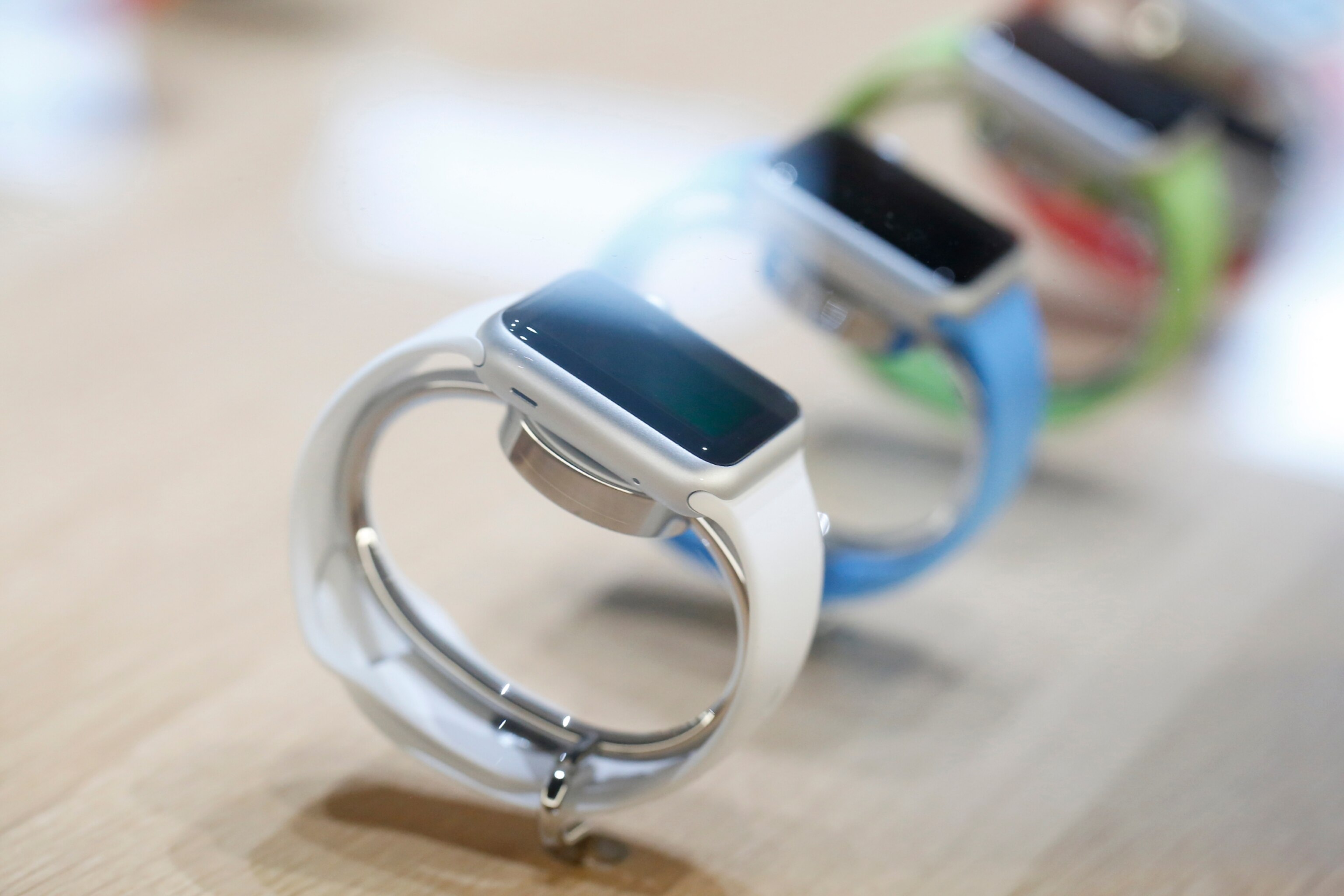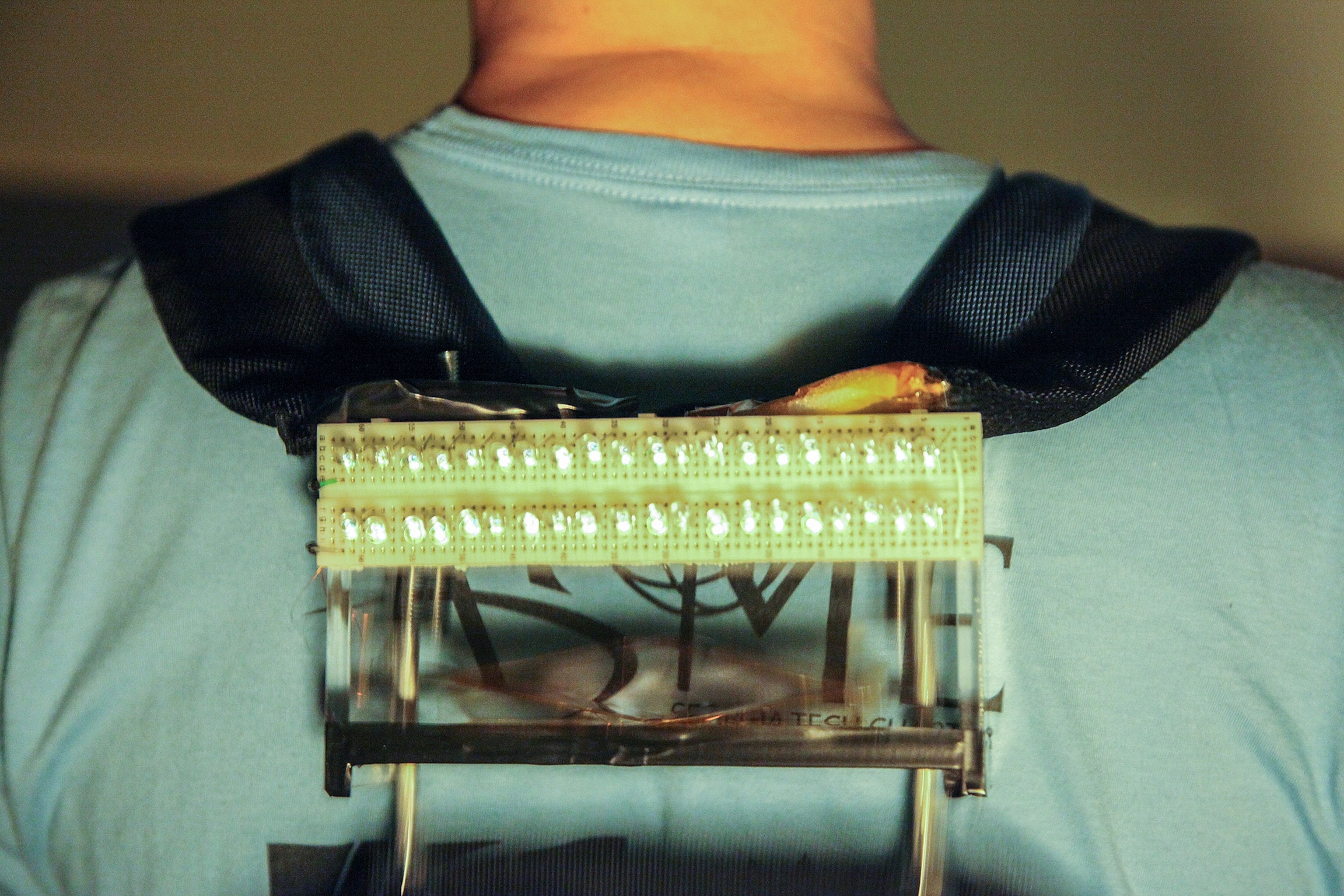
Wearable Electronics' Newest Wrinkle: Power-Producing Cloth
Nanotechnology uses human motion to power electronics and other devices—no charging cords or batteries needed.
Good-bye charging cords and batteries. Wearable electronics such as the Apple Watch might soon power themselves with a clean, portable energy source: human motion.
If cutting-edge nano science pans out, limited battery life may no longer be the bugaboo of everyday technology. At universities worldwide, researchers are finding new ways to produce power from walking, typing, and other basic activities.
Their progress, documented in at least 146 scientific papers in the last three years, holds promise not only for wearable devices but also for keyboards, smartphones, laptops, and biomedical applications such as robotic skins.
"Self-powered electronics will play a critical role in the Internet of Things," in which people and devices are seamlessly connected, says Zhong Lin Wang, a leading researcher in nanotechnology as regents' professor of engineering at Georgia Institute of Technology. (Read about how scientists also develop nanobatteries.)
The basic principle—static electricity—is ancient. It focuses on the friction that occurs when two dissimilar materials touch each other. It's basically the spark that can occur when combing your hair, putting on a freshly laundered fleece in winter, or touching a doorknob after shuffling across carpet.
What's new are the minuscule materials, typically a fraction of the width of human hair. The result: Nanogenerators that are triboelectric, which stems from the Greek word for "rub."

The latest example is a flexible and foldable cloth that, in lab experiments, powered LEDs, a liquid crystal display, and a vehicle's keyless-entry remote. Here's how it worked: A team of Korean and Australian researchers stacked together four pieces of this cloth—coated with nanorods and a silicon-based organic material—and then pushed down on the material and captured the energy generated from that pressure.
"The cloth worked for more than 12,000 cycles, showing very good mechanical durability," says Sang-Woo Kim of Korea's Sungkyunkwan University, lead author of a paper that was published last month in the peer-reviewed journal ACS Nano.
"Cost is not a big hurdle for commercialization," he says, noting the materials are inexpensive. Yet the smart cloth needs to be washable, so his team is pursuing "novel technology" to make it waterproof.
The new power-producing cloth intrigued other researchers. "This is a clever approach ... really nice work,," says James Tour, a nanoengineering professor at Rice University in Houston, Texas.
"If you had a whole suit of this stuff, you could generate an impressive amount of power," says George Crabtree, director of Argonne National Laboratory's Joint Center for Energy Storage Research. He says he doesn't think the electric charges would be dangerous—unless perhaps the wearer was carrying lighter fluid.
Crabtree says the challenge may be the intermittency of the power produced, similar to that from solar panels or wind turbines. (See how scientists also turn to nanotechnology to boost solar performance.)
"To make this work, you may need to continually compress and decompress" the cloth, he says, adding a battery or capacitor may be needed for energy storage. (Learn the difference between a battery and a capacitor.)
The cloth is not the only recent people-powered innovation. Self-charging keyboards and energy-producing backpacks have also debuted within the last 18 months from Wang's team at Georgia Tech, which has received funding from the U.S. Department of Energy. (Read about the Google Science Fair winner who created a flashlight powered by body heat.)
Wang's keyboard powers itself by capturing the electric charges that result when a user's finger strikes the device's multi-layer plastic materials. The keyboard is also smart, because it knows who the user is by tracking typing patterns. It holds the potential to improve computer security.
The Atlanta-based team also created a backpack that generates energy from the wearer's walking. The backpack contains a device made from thin, lightweight plastic sheets. As the wearer moves, the inside surfaces of the sheets touch and separate, driving electrons back and forth and producing an electric current.
More recently, in collaboration with Columbia University, Wang demonstrated what's touted as possibly the world's thinnest electric generator. The atomically thin material generates an electrical voltage when it's stretched or compressed in what's known as the piezoelectric effect. (Check out special tiles that turn footsteps into electricity.)
"This material—just a single layer of atoms—could be made as a wearable device, perhaps integrated into clothing, to convert energy from your body movement to electricity and power wearable sensors or medical devices or perhaps supply enough energy to charge your cell phone in your pocket," co-author and Columbia engineering professor James Hone said in announcing the findings, published in October in the journal Nature.
The nanogenerators aren't likely to remain confined to the lab for long. Kim and Wang both say they are working with companies to commercialize the devices.
The story is part of a special series that explores energy issues. For more, visit The Great Energy Challenge.
On Twitter: Follow Wendy Koch and get more environment and energy coverage at NatGeoGreen.





